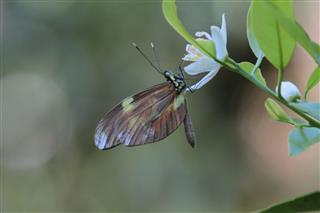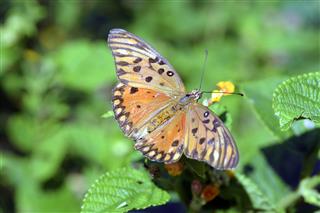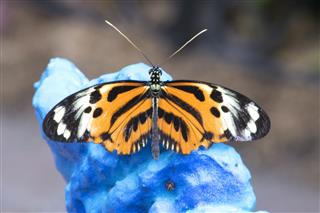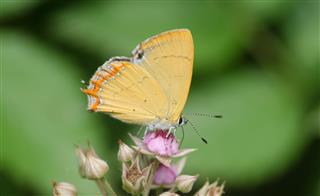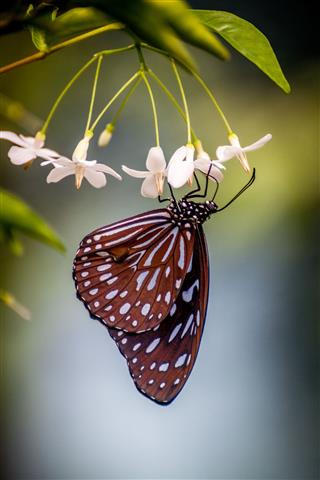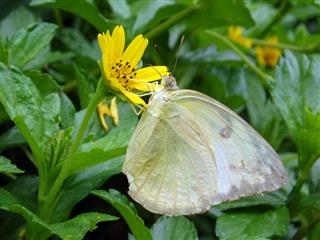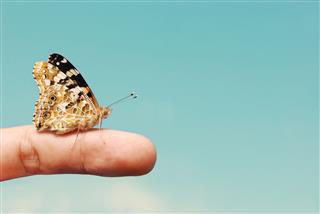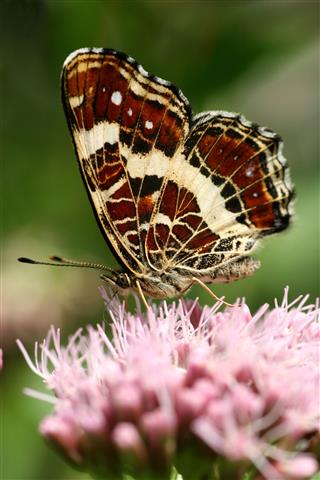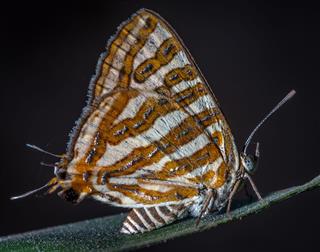
A complete change of physical form starting from the egg, to a larva, then a chrysalis, and then a gorgeous butterfly – these are the different stages in the life of a butterfly. Read the AnimalSake write-up below to know more about the metamorphosis of a butterfly.
Did You Know?
Queen Alexandra’s birdwing is the world’s largest butterfly, found in the Papua New Guinea rainforests. It has a wingspan of around 30 cms, and the world’s smallest butterfly, Western Pygmy Blue, has a wingspan of only, 1.5 cm.
One of the most familiar and insects, butterflies are pleasing to the eyes because of their vivid and bright colors. Possessing equally vivid and grand names like the Monarch, Admiral, Queen Alexandra’s Birdwing, Viceroy, Ulysses, etc., there are innumerable species of butterflies in the world. As delightful and beautiful these creatures may seem, they are not born this way. They go through a drastic and dramatic change in appearance to become the creatures we know. Some striking examples of beautiful butterflies are given below.
To begin with, understand that a metamorphosis is a transformation or the different stages of development that each and every insect undergoes before it becomes an adult.
The Four Stages of a Butterfly
The Monarch butterfly is very popular and a fairly common butterfly. It is considered to be supreme and one of the most beautiful among other species of butterflies. The reason is simple, they have the ability to travel across continents, live longer than other butterfly species, and their pupa is one of the best-looking chrysalis compared to any other butterfly. It becomes a beautiful butterfly only after passing through the different phases of metamorphosis. The four stages are clearly depicted in the following diagram.

Egg – The First Stage

The female butterflies are very finicky about the plants they choose to lay their eggs on. This is because the hatching caterpillar has to survive by munching on the leaves of that host plant. For example, a female Monarch butterfly prefers laying eggs only on milkweed plants. Similarly, other butterfly species also have their own preferences when it comes to laying their eggs. Some prefer the underside of the leaves, some on top of the leaves, others prefer laying a single egg, whereas some prefer laying multiple eggs on one leaf. These eggs differ in color too, some are white and some are pale or jade. They are very small and ovate in shape. It takes almost a week or two for the eggs to hatch. The larva develops inside the egg and nourishes on the yolk of the egg. Finally, when they are ready, they make a small hole in the egg and emerge on the leaf. Here is when the second stage begins, the eating phase.
Larva – The Second Stage

In this phase, the primary job of the larva, also known as caterpillar, is to eat or nourish itself. Initially, the caterpillars are very small, they weigh about 0.55 milligrams and measure about 0.1 inch. However, once the caterpillar starts eating it grows rapidly, first feeding on its own egg shell that is filled with nutrients and then moving on to the leaves of the host plant. In just about two weeks, they grow fully and measure around 2 inches thick. The adult caterpillar develops eight pairs of legs and, as it grows longer it outgrows its skin and starts to molt or shed its skin. The caterpillar molts its skin around five to six times. Once the adult caterpillar is fully developed, it starts crawling away from the host plant until it finds a safe haven to pupate. It then makes a silk-like mat on the surface and hangs itself upside down, for one whole day, and takes the shape of the letter“J”. The caterpillar then sheds its skin for one last time before it moves into the next stage of transformation.
Pupa – The Third Stage

When the caterpillar enters the third phase, it has already shed its eight pairs of legs and the head capsule, which had housed six eye lenses. In this interesting stage, the caterpillar is slowly transforming itself inside the pupa also known as chrysalis to form a butterfly. Though initially the chrysalis is soft, it hardens within an hour to form a protective shell. Inside the chrysalis or pupa, the caterpillar radically converts its body and starts developing its colorful wings, long antennae, compound eyes, long legs. Thus transforming itself into a captivating butterfly. This conversion takes around ten to fifteen days before it moves to its final stage and gets ready to fly.
Adult Butterfly – The Last and Final Stage

The hardened chrysalis cracks and a magnificent butterfly emerges from it. The wings of the butterfly are weak and wet. It clings onto the shell of the chrysalis. At this juncture, a life-saving fluid known as hemolymph is pumped into the body of the butterfly. Hemolymph spreads slowly throughout the body and wings. This fluid helps in enlarging or stretching the butterflies body and wings. It takes about an hour for the wings to dry. After the wings become strong, this transformed butterfly is ready to fly. The average lifespan of a small butterfly is about a week or two, whereas some adult species are known to have survived a month or more. As soon as it emerges from its chrysalis, within four to five days it is able to mate and reproduce, thus starting the cycle of life all over again.
Fun Trivia About Butterflies



- They can fly more than 2000 miles in the fall.
- Generally, butterflies fly up to 30 miles every hour.
- They are cold-blooded by nature; they need natural heat to warm themselves from within.
- This one is astonishing – there are more than 24,000 species of butterflies (Gasp!!).
- Butterflies taste with their feet and smell with their antennae.
- A butterfly rests with its wings up and the wings touch each other as well, unlike a moth whose are wings are spread apart while it rests.
These gracefully, jeweled wings also contribute a lot to the regional ecosystem, by fluttering from one flower to another and transferring pollen from an anther to the stigma of a flower. To sum up, butterflies are one of the most stunning and vibrant creations among insects, don’t you think so?

